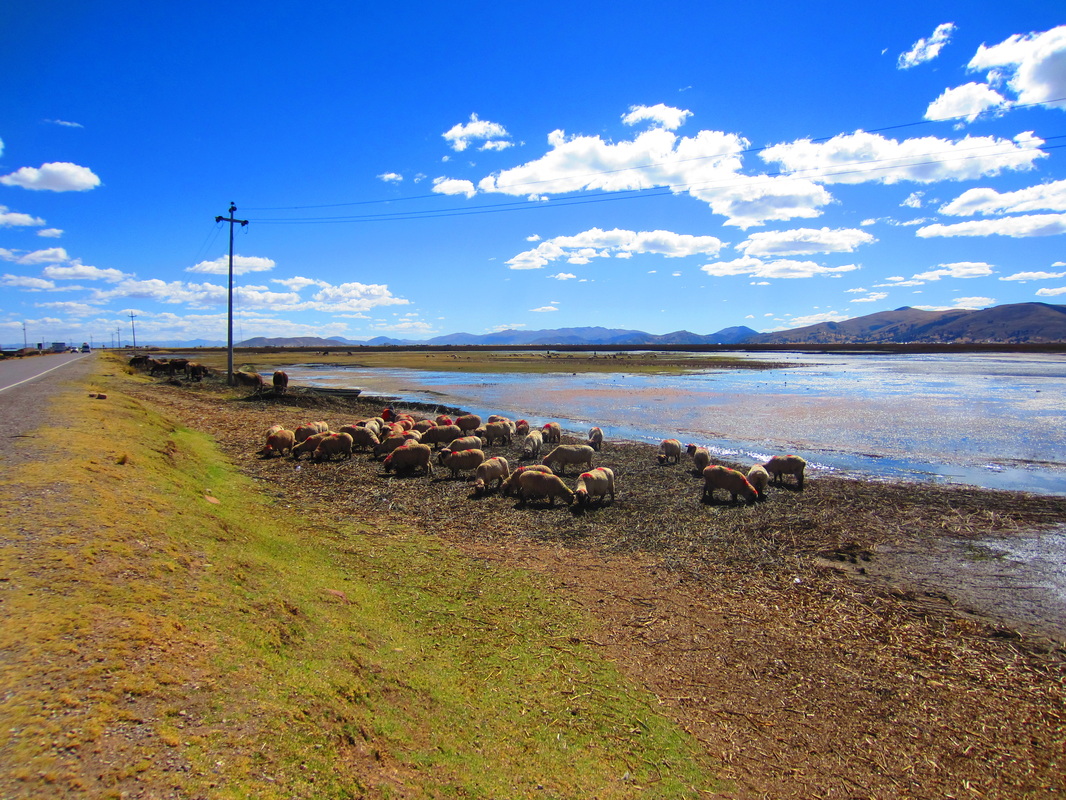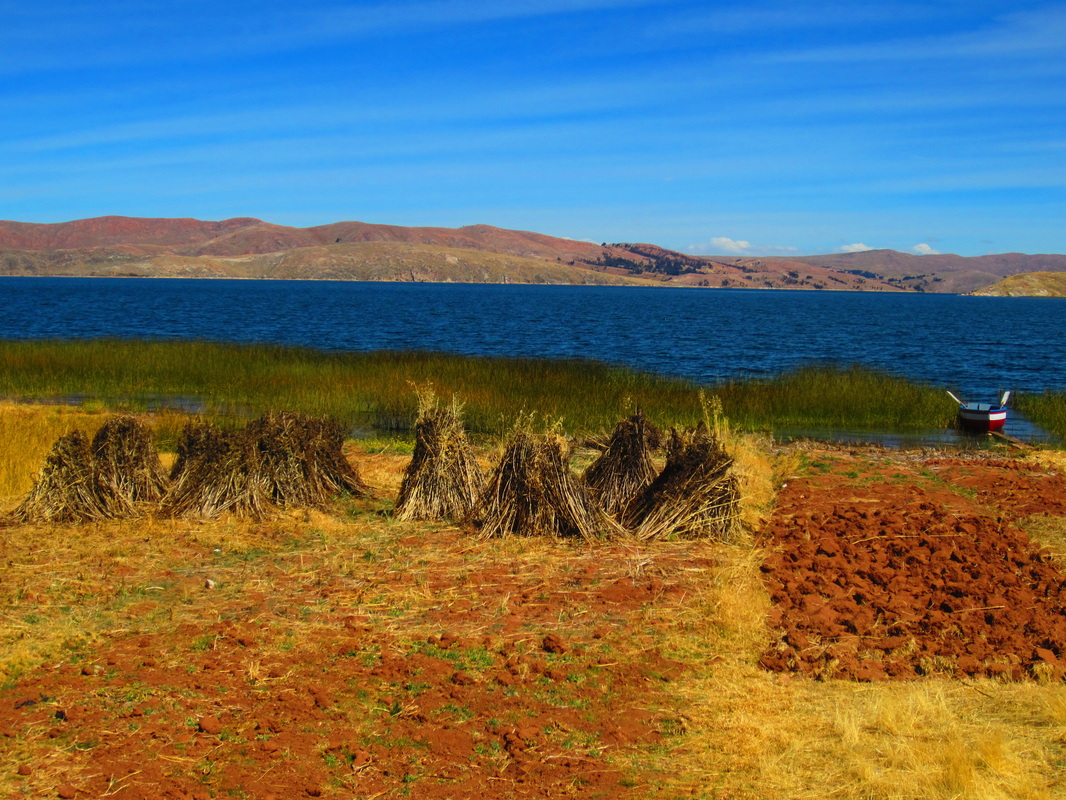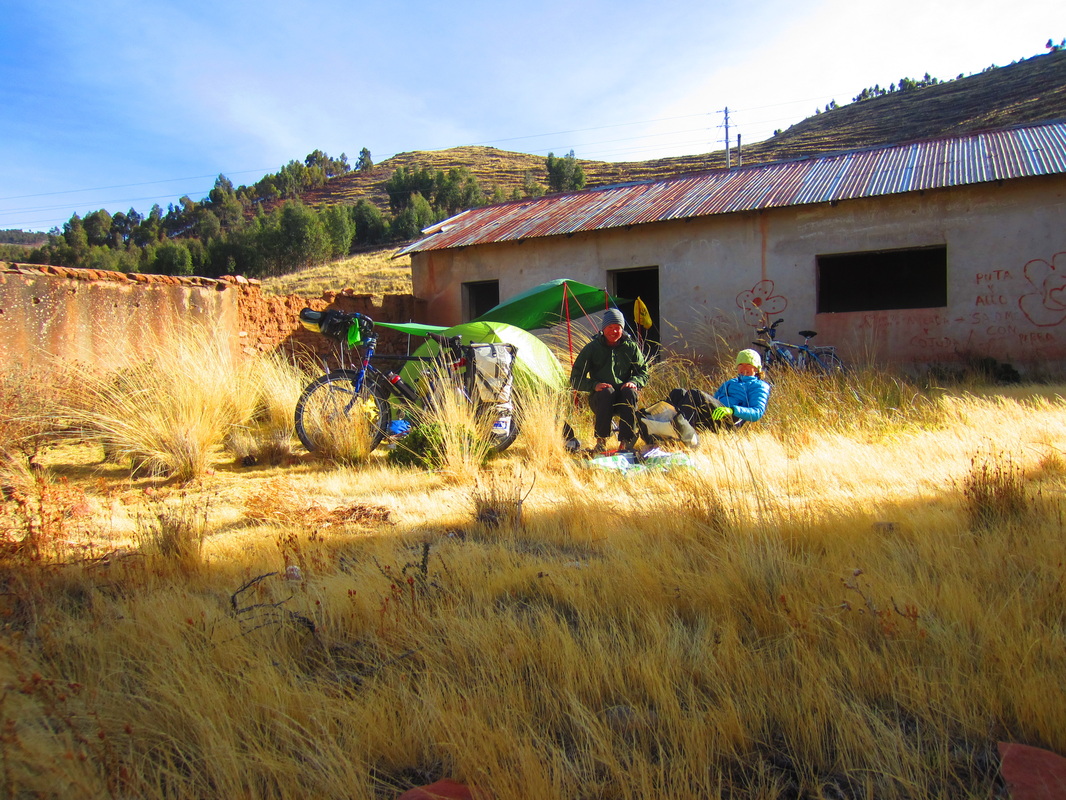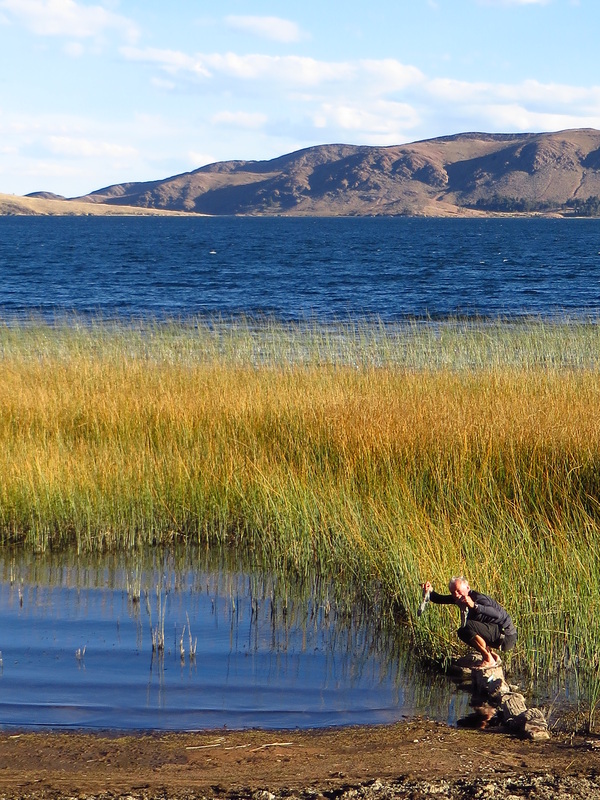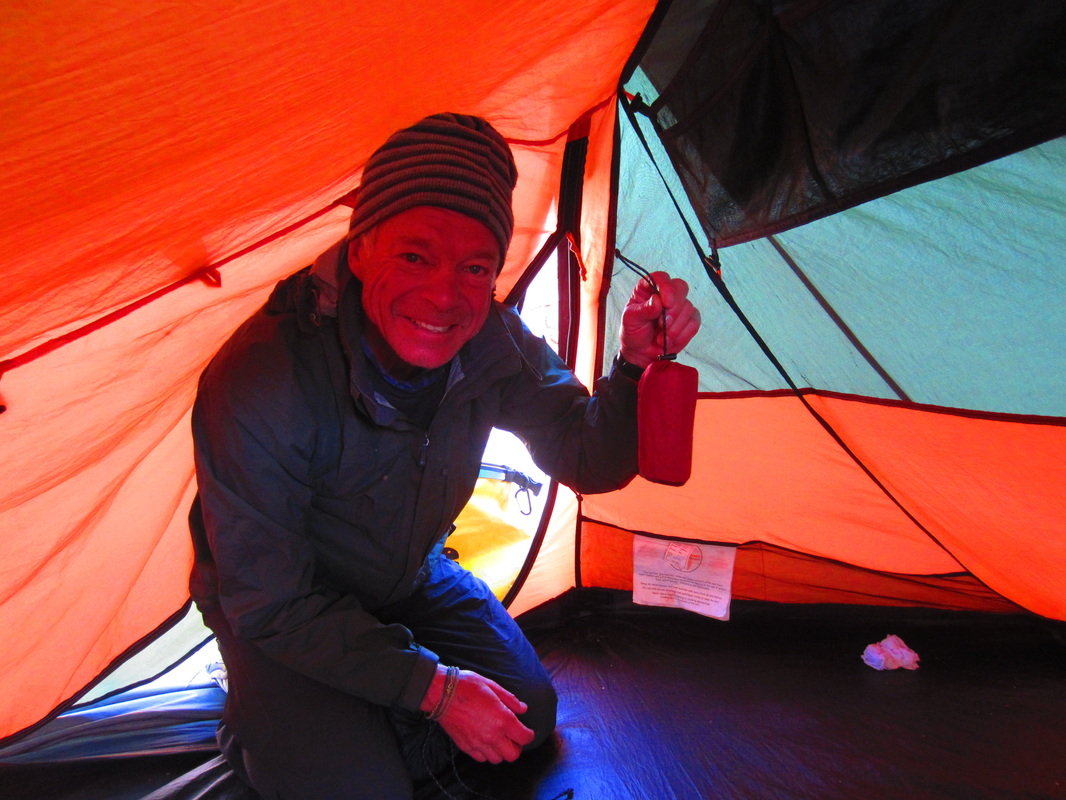22/7/2013 Juliaca to 6km past Huancané,
Camping on the shores of Lake Titicaca
D70, T6, Av17, Max71 tot16701, 6634
Strong tail winds, NW, hot in the middle of the day
It was nice to have had some partly luxurious accommodation for the night.
Leaving town again was a gauntlet of vehicles of all shapes and sizes.
We ate our way out of the city, stopping for chicharrone of Alpaca, fruit and drinks.
We were heading for Huancané, on the northern shore of Titicaca.
The road was flat, with no shoulder, busy and quite dangerous.
We were most of the time hammered by a strong nor wester.
Soon the lake wetlands were encountered.
This was our first glimpse at life on the shores of Titicaca.
People were gathering reeds, they cut them from boats. Or on foot in the shallows.
These then are heaped up and fed to stock. Strong cross winds were encountered on the narrow secondary road.
Nearing Huancané , we came across the wetlands at the northern end of Titicaca and those of Lago de Arapa.
Here people were cutting and gathering the reeds synonymous with Titicaca. They were drying them and at one point on the causeway type road, stock were tied up and were eating piles of the dried product.
Others were paddling wooden dinghies full of the the reeds to the roads edge.
Water fowl were in abundance, though not in huge groups of single species.
Arriving in Huancané, we bought some water for the night.
Leaving town, some 5km we caught our first glimpse of the lake proper. Blue would be the most obvious description.
Some 2km we spotted on old building on the lake shore, a short inspection found it to be unoccupied.
Someone had spent big money here. There was a retained area infront of the building offering vistas across the bay south to Sica and on to the main body of water.
A 50m area of reeds bounded the shoreline infront of the site.
Once settled in about 1530 hours, it was an easy day, we soon found the site was a favourite with people wanting a toilet with a view. There was however a good unsoiled area for us, no “could not waiters” visited us during the afternoon.
Again this species of grass was present that had seed heads that penetrated anything softer than leather or plastic.
Deirdre had to put time aside to free her socks of the annoying bloody things.
My new leather trainers were impenetrable thankfully.
The early evening was enjoyed just taking in the scene under a near full moon.
Dinner was cooked inside the disused building.
Camping on the shores of Lake Titicaca
D70, T6, Av17, Max71 tot16701, 6634
Strong tail winds, NW, hot in the middle of the day
It was nice to have had some partly luxurious accommodation for the night.
Leaving town again was a gauntlet of vehicles of all shapes and sizes.
We ate our way out of the city, stopping for chicharrone of Alpaca, fruit and drinks.
We were heading for Huancané, on the northern shore of Titicaca.
The road was flat, with no shoulder, busy and quite dangerous.
We were most of the time hammered by a strong nor wester.
Soon the lake wetlands were encountered.
This was our first glimpse at life on the shores of Titicaca.
People were gathering reeds, they cut them from boats. Or on foot in the shallows.
These then are heaped up and fed to stock. Strong cross winds were encountered on the narrow secondary road.
Nearing Huancané , we came across the wetlands at the northern end of Titicaca and those of Lago de Arapa.
Here people were cutting and gathering the reeds synonymous with Titicaca. They were drying them and at one point on the causeway type road, stock were tied up and were eating piles of the dried product.
Others were paddling wooden dinghies full of the the reeds to the roads edge.
Water fowl were in abundance, though not in huge groups of single species.
Arriving in Huancané, we bought some water for the night.
Leaving town, some 5km we caught our first glimpse of the lake proper. Blue would be the most obvious description.
Some 2km we spotted on old building on the lake shore, a short inspection found it to be unoccupied.
Someone had spent big money here. There was a retained area infront of the building offering vistas across the bay south to Sica and on to the main body of water.
A 50m area of reeds bounded the shoreline infront of the site.
Once settled in about 1530 hours, it was an easy day, we soon found the site was a favourite with people wanting a toilet with a view. There was however a good unsoiled area for us, no “could not waiters” visited us during the afternoon.
Again this species of grass was present that had seed heads that penetrated anything softer than leather or plastic.
Deirdre had to put time aside to free her socks of the annoying bloody things.
My new leather trainers were impenetrable thankfully.
The early evening was enjoyed just taking in the scene under a near full moon.
Dinner was cooked inside the disused building.
